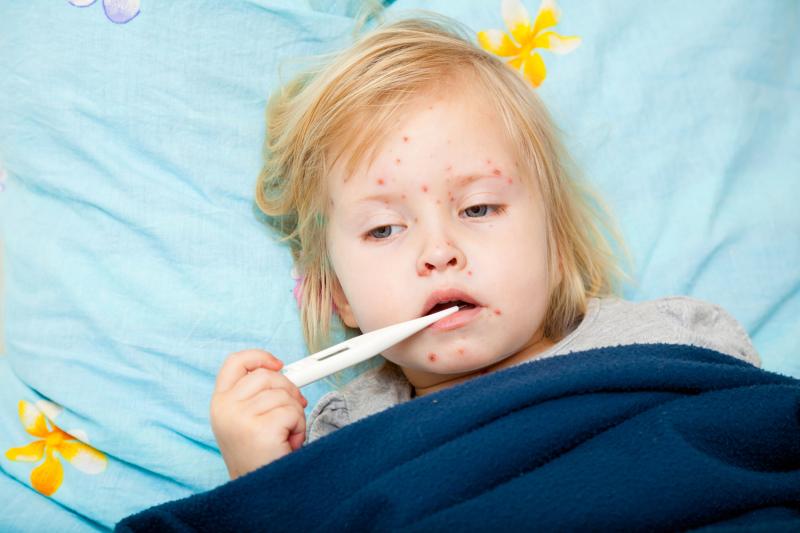
Complimentary Story
March 2024Here we go again. It is late winter and there is another outbreak of measles. Apparently driven by the unvaccinated. This once ubiquitous viral illness has been relegated to history, or so we were told when I was in training many years ago. I must admit, I don’t think I have ever seen an actual case of measles, even as a child. So other than vilifying the unvaccinated, why does the Medical Industrial Complex make such big deal of this illness?
There are six classically numbered childhood illnesses, First through Sixth Disease. All have their causative agents which have been isolated and reasonably well characterized and other than Fifth Disease this nomenclature has been abandoned. In this scheme, measles (rubeola) was First Disease. It has been described for millennia. Normally it is a seasonal infection with late winter or spring outbreaks and historically, epidemics every 2-3 years. It is droplet spread and not airborne, so unlike some other viral illnesses recently in the news, masks may actually help to reduce the spread. Early symptoms include high fever, profuse runny nose and congestion, sneezing, conjunctivitis and cough. It is highly contagious. There is a short incubation period after exposure before these symptoms start. The rash starts 2-4 days after the symptoms start. Full recovery should be about 10-14 days after the rash appears.
Back to the question, “Why all the fuss?” I suspect there is ample room for speculation as to the foundation for the concern. Financial has to be considered, whether for the pharmaceutical industry, the medical industry or big corporations who have their workers out attending to ill children instead of being at work producing their “widgets.” But there are some real complications that may affect those who contract the disease. While the vast majority of illnesses resolve without issue, complications do happen. I reviewed “old material” hoping to find less modern bias, but I also looked at more recent information to see what may have changed since my textbooks were written (stone tablet age after all).
As numbers, statistics seem like they should be infallible, but there is substantial room for interpretation of these numbers. The number of measles cases was on the decline before the vaccine was introduced. As I look at the change in case reports, there is a very steep decline after the vaccine is introduced, more than the rate of change before the introduction. Is this evidence of “A” caused “B?” Both the vaccinated and unvaccinated get measles. While it is more common in the unvaccinated, the proportion is 75:25, but varies considerably by age.
The CDC reports that the worst year of the 21st Century was 2014 with 667 cases. In most years, there are less than 100 reported cases. The last reported death in the US was in 2015. My textbooks quoted a 0.3% (3 in a thousand cases) mortality rate, so it would appear that we have gotten better at supportive care.
Common complications include a secondary bacterial pneumonia, encephalitis, ear infections and diarrhea. Probably the scariest number though, is that 1 in 4 are hospitalized for the infection. Once the infection is recognized, the only real treatment is supportive: hydration, fever control, antibiotics for bacterial infections, etc. The deaths and hospitalizations seem to be mostly from the secondary complications and not simply because of the virus. All of this is real cost to society. There is more to the reduction or elimination of this illness than simply padding the pockets of the pharmaceutical industry.
There is no specific treatment for measles, but there seems to be reasonable evidence that having adequate Vitamin A is important for both treatment and prevention of severe measles. When someone becomes infected with this virus, and likely several others, Vitamin A levels drop. If there is not enough Vitamin A in reserve, the immune system cannot work effectively against the virus. The protocol has been to give a couple of doses of Vitamin A as soon as the infection is recognized. It is reasonable to speculate that the overall better nutrition achieved during the past 60 years has made a difference in this disease as well. How much is hard to quantify since several variables have been manipulated during this time frame.
The main focus with measles has been to prevent it through vaccination. I do not have enough space to discuss any of the controversial issues surrounding vaccines. Others have done a fine job and I encourage the reader to seek out this information. If there are questions, seek out a physician who is willing to review the information that you have found and truly review it and discuss it with you. I know there are others in healthcare who have strong, and likely well founded positions about vaccines, but having a rational discourse with someone who may not share your opinion will increase both of your knowledge bases and solidify your decision.
There is a stand-alone vaccine for those who are concerned about the MMR (measles, mumps and rubella) or MMRV (measles, mumps, rubella, varicella) vaccines. Two doses are currently recommended, one at 15-18 months of age and one before entering kindergarten.
For most children who get measles, it is a fairly mild illness that looks really scary because of the rash. But the fuss is that measles is far more than a simple cold for some children, with very real and very serious complications in a group of patients that normally do very well with illness.
Do your best to be healthy with a diet having a variety of fresh foods. Keep your vitamins up. Encourage the kids to play — like outside and not video games. Maybe I can finish my career in medicine without ever seeing a case of measles.
GenesisPrimaryCare.com



